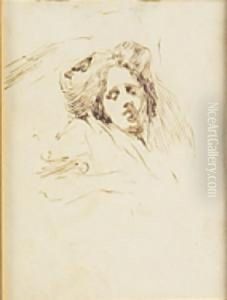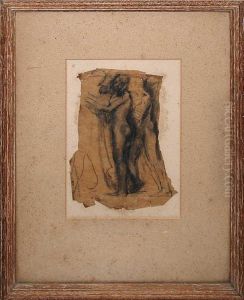Andrew O'Connor Paintings
Andrew O'Connor was an American-Irish sculptor whose career spanned the late 19th and early 20th centuries. Born on November 7, 1874, in Worcester, Massachusetts, O'Connor began his foray into the arts under the tutelage of his father, who was also an artist. He showed a great affinity for sculpture from a young age and was exposed to the craft by assisting his father on various projects.
O'Connor's initial artistic development was influenced by his father's work and the environment of the burgeoning American art scene of the late 1800s. He moved to Paris in the late 1890s, which was then the hub of the art world, to further his education and refine his skills. There, he was exposed to a milieu of artistic styles and ideas that were central to the development of modern art. His work began to reflect a synthesis of the traditional sculptural techniques he learned in the United States and the innovative approaches he encountered in Europe.
In Paris, O'Connor studied at the Académie Colarossi and established his reputation as a sculptor, exhibiting at the Paris Salon and receiving critical acclaim for his work. His sculptures often depicted historical and allegorical figures, characterized by a sense of realism and detailed craftsmanship. After his time in France, he lived and worked in various locations including the UK and Ireland, where he developed a connection to Irish culture and heritage.
Throughout his career, O'Connor created public monuments, funerary sculptures, and works for private clients. One of his most notable works is the statue of President James A. Garfield located at the United States Capitol in Washington, D.C., completed in 1887. O'Connor's artistic contributions were recognized in his time, and he continued to sculpt until his death on June 24, 1941, in Dublin, Ireland.
O'Connor's legacy is marked by his commitment to the realistic portrayal of his subjects and his ability to capture the human form with a profound sense of empathy and dignity. His works are housed in various collections and public spaces, serving as lasting testaments to his skill and artistic vision.

